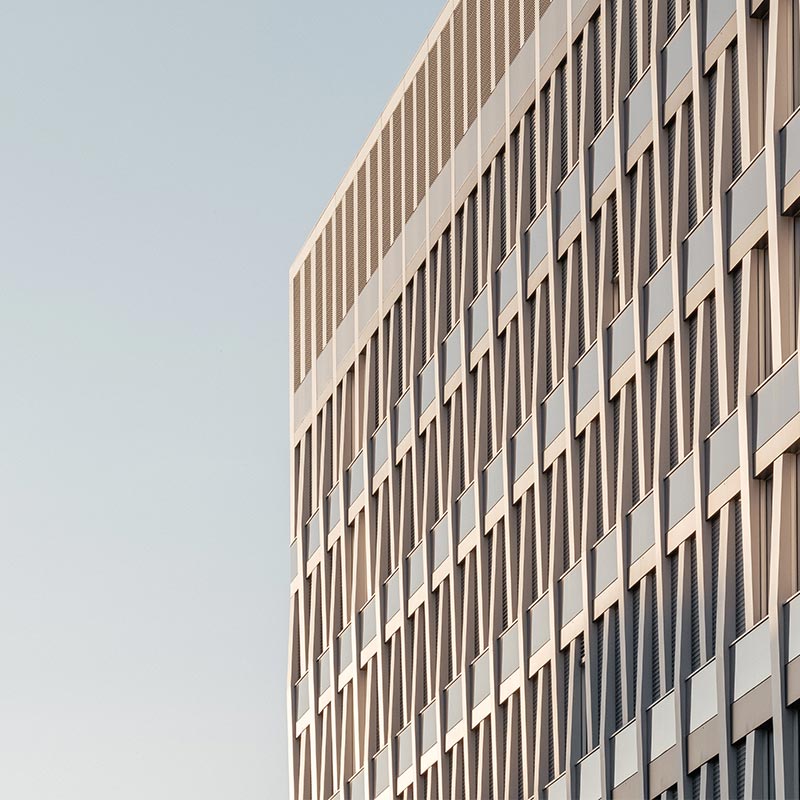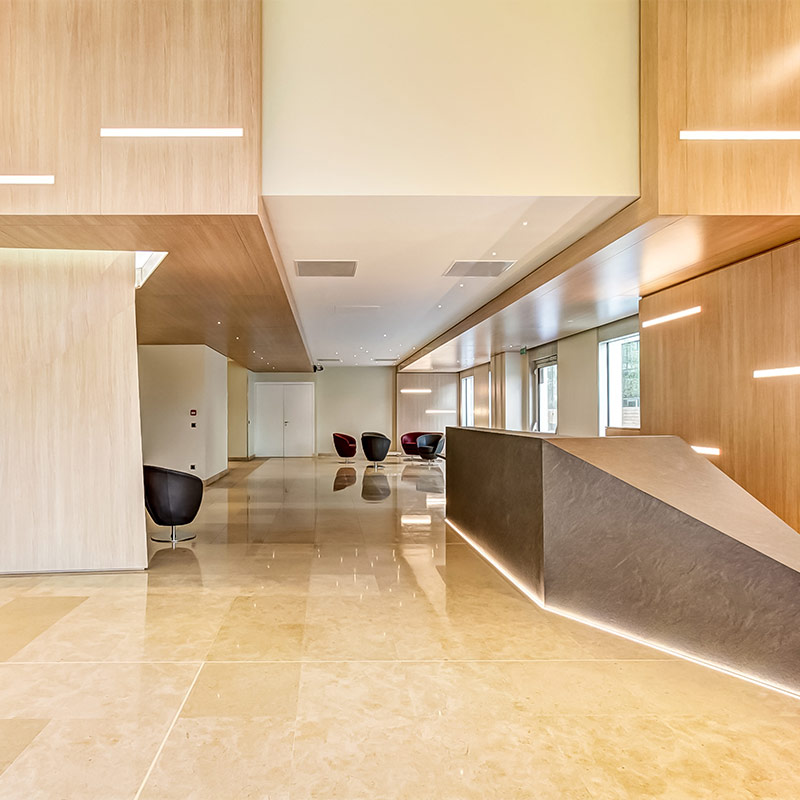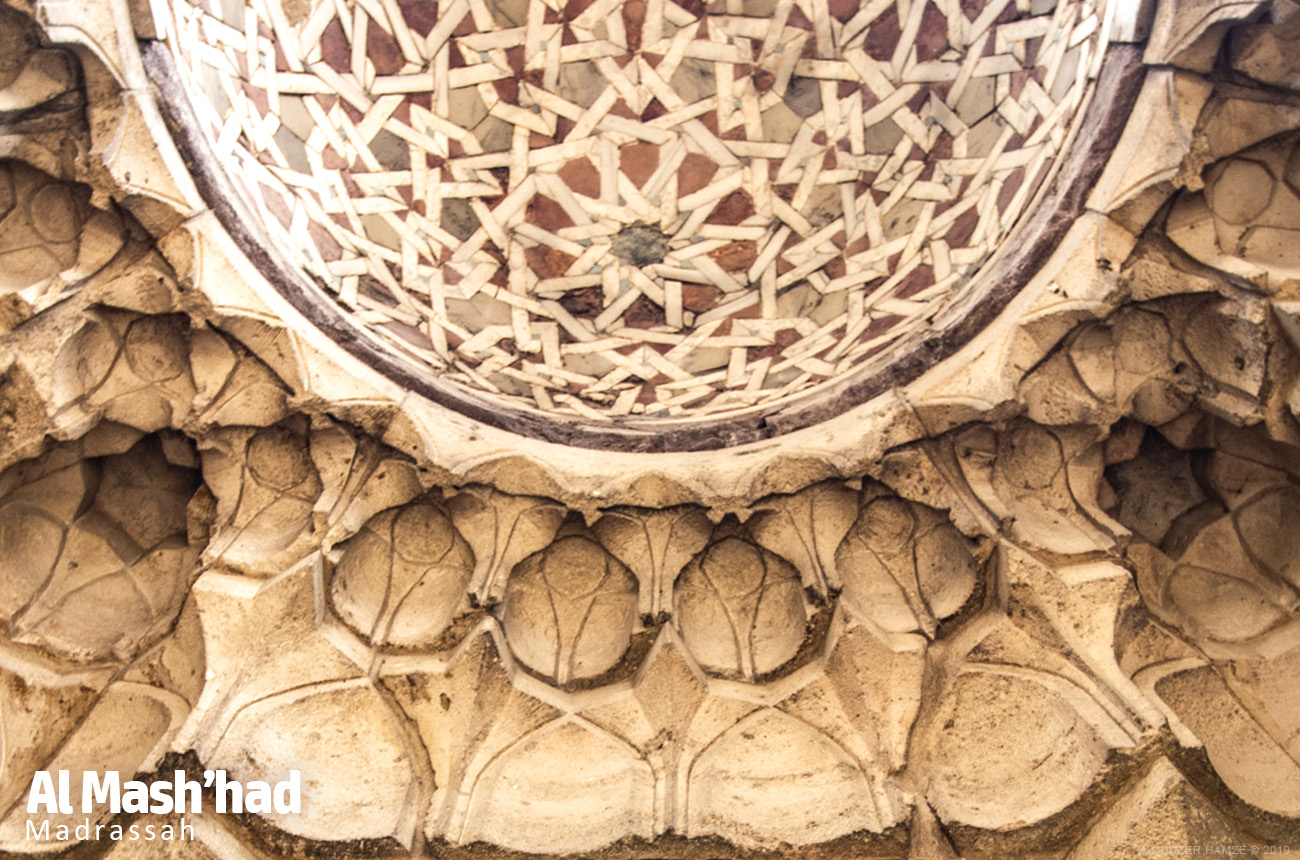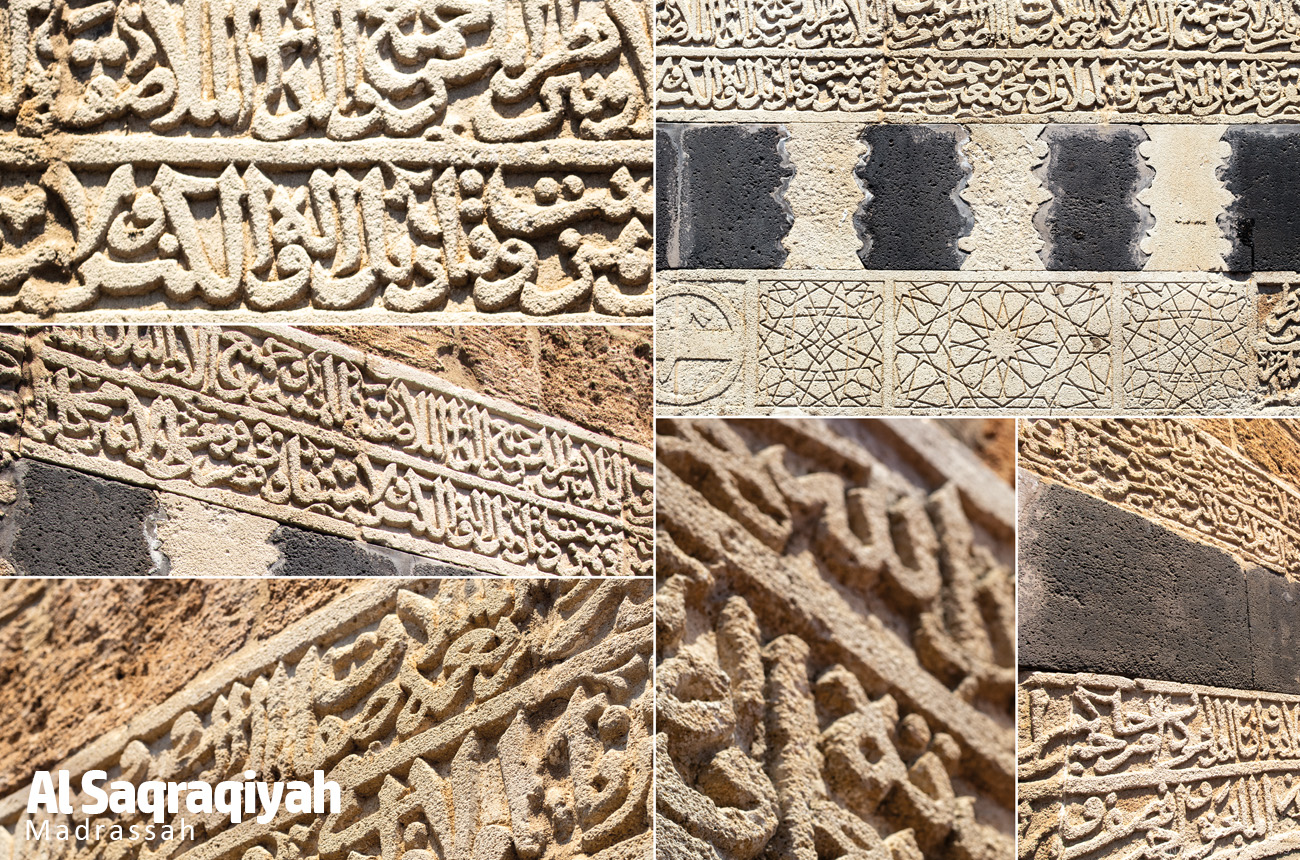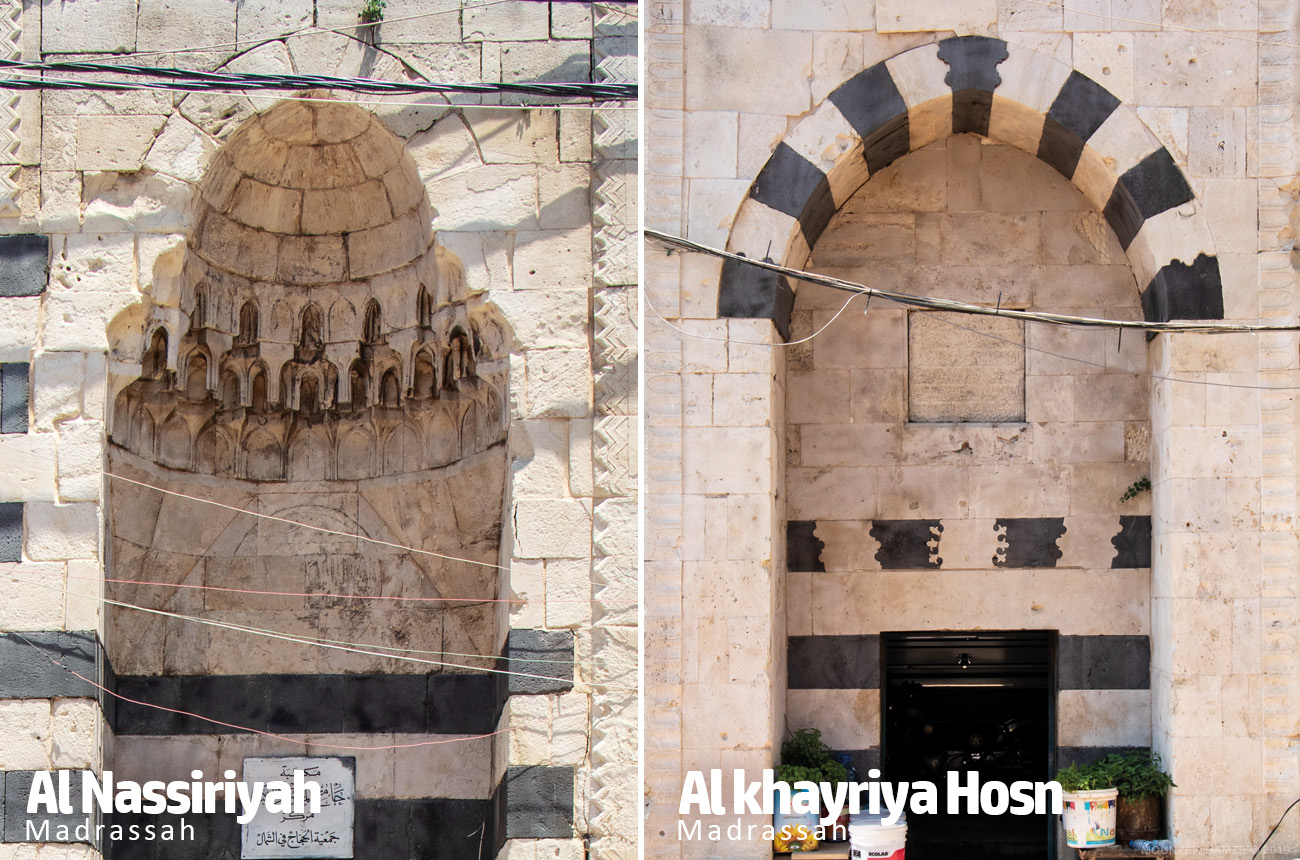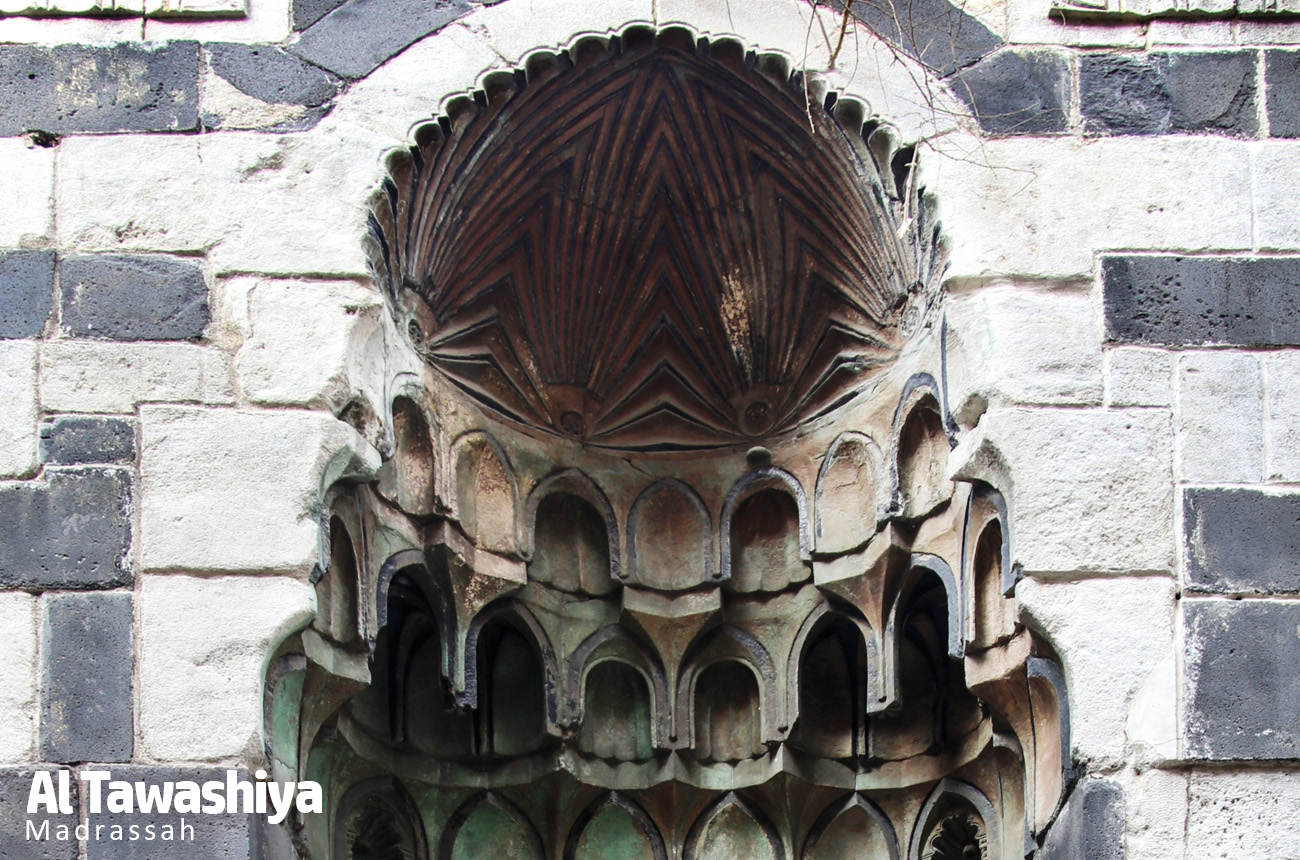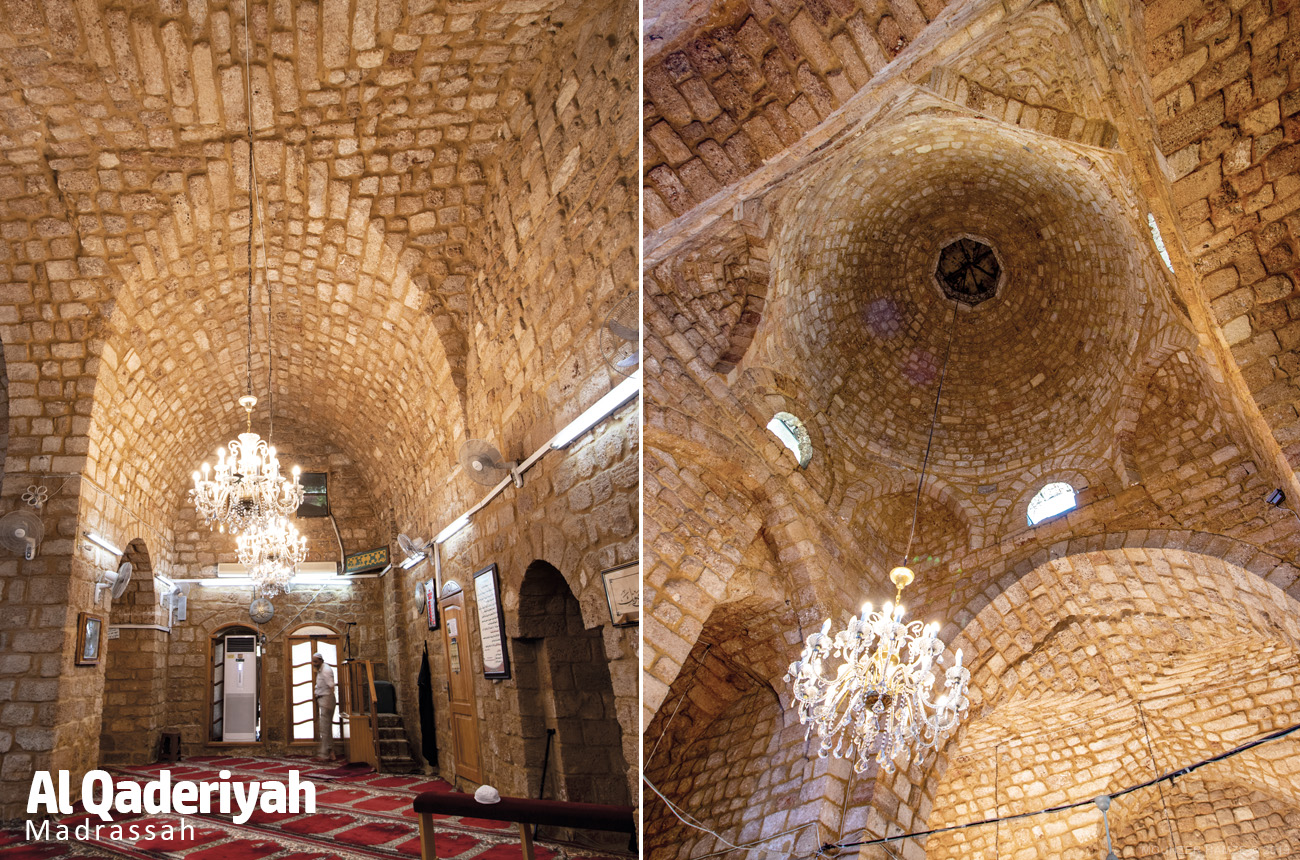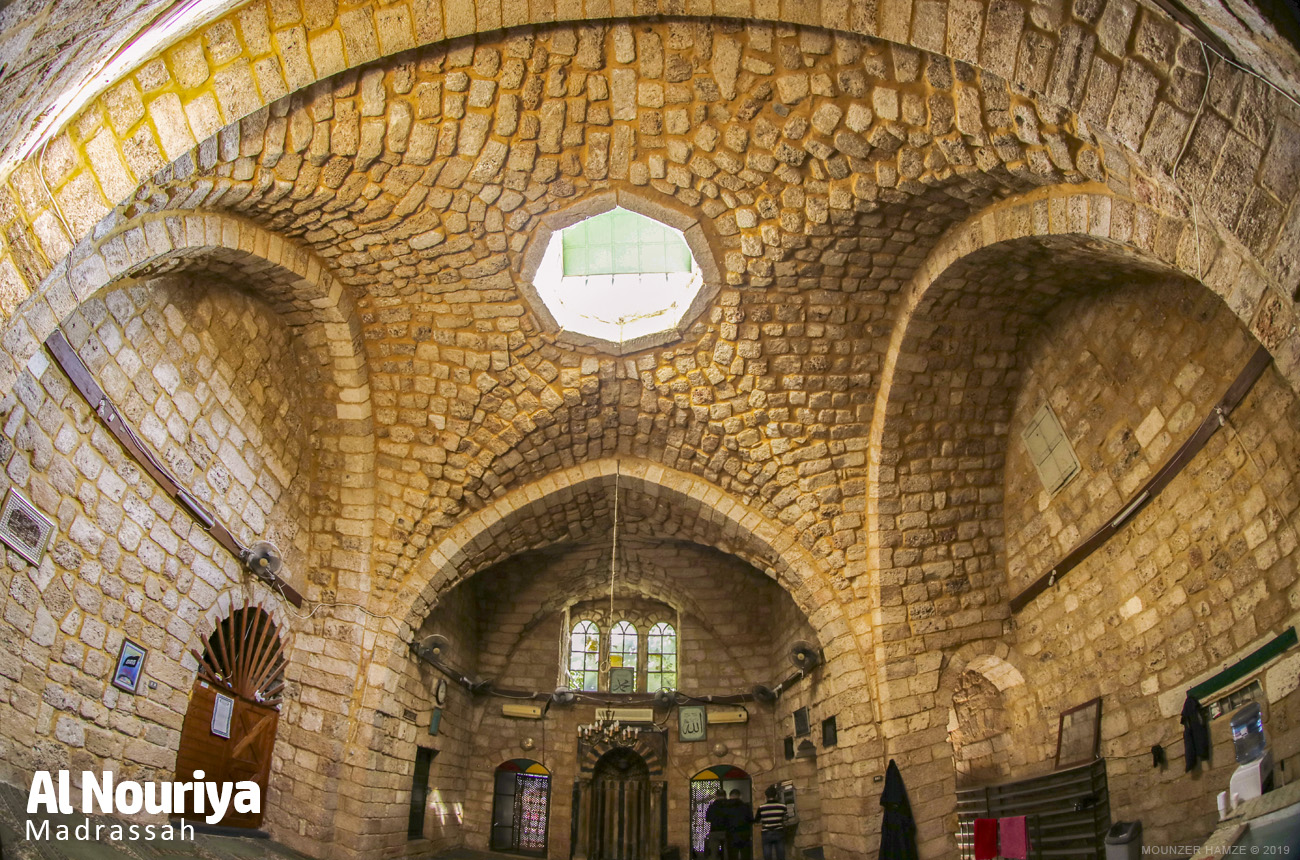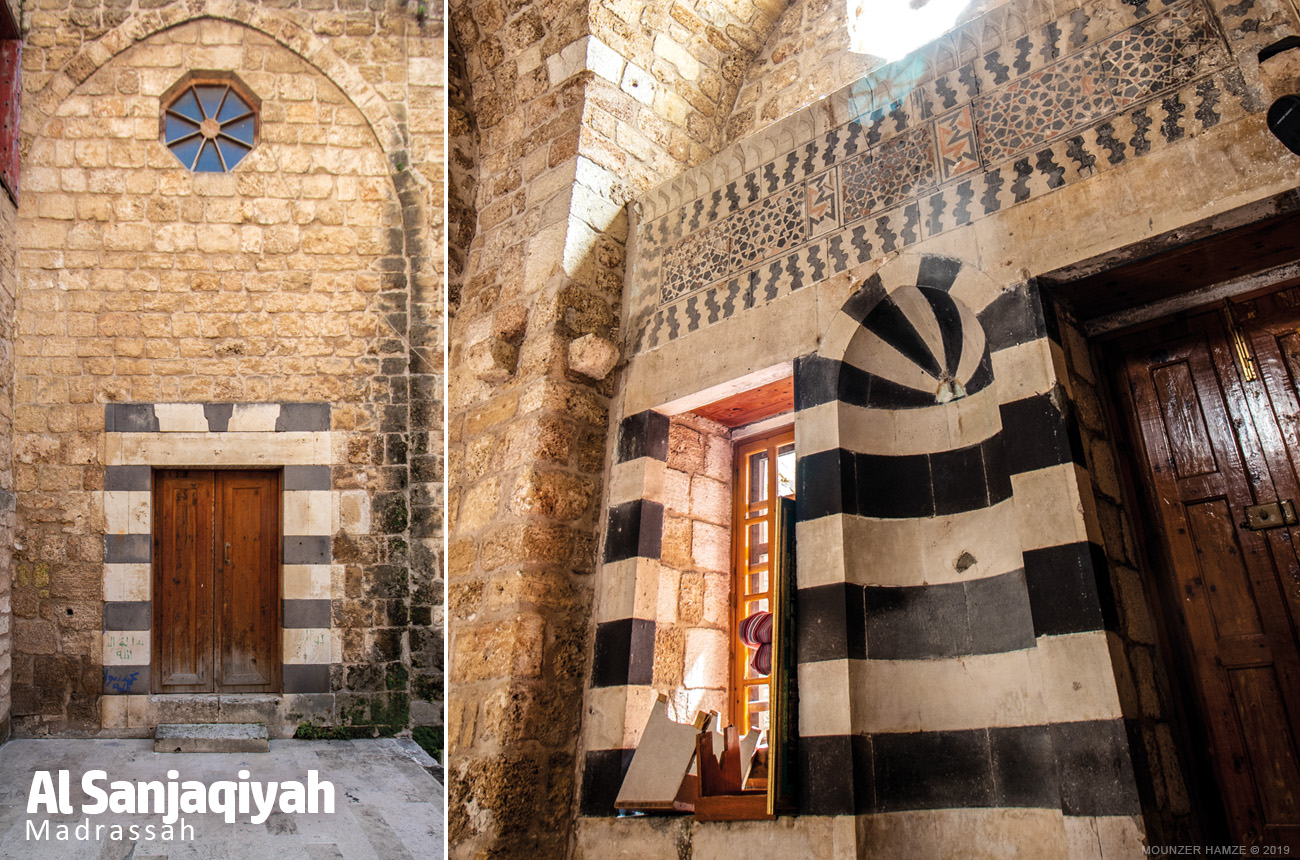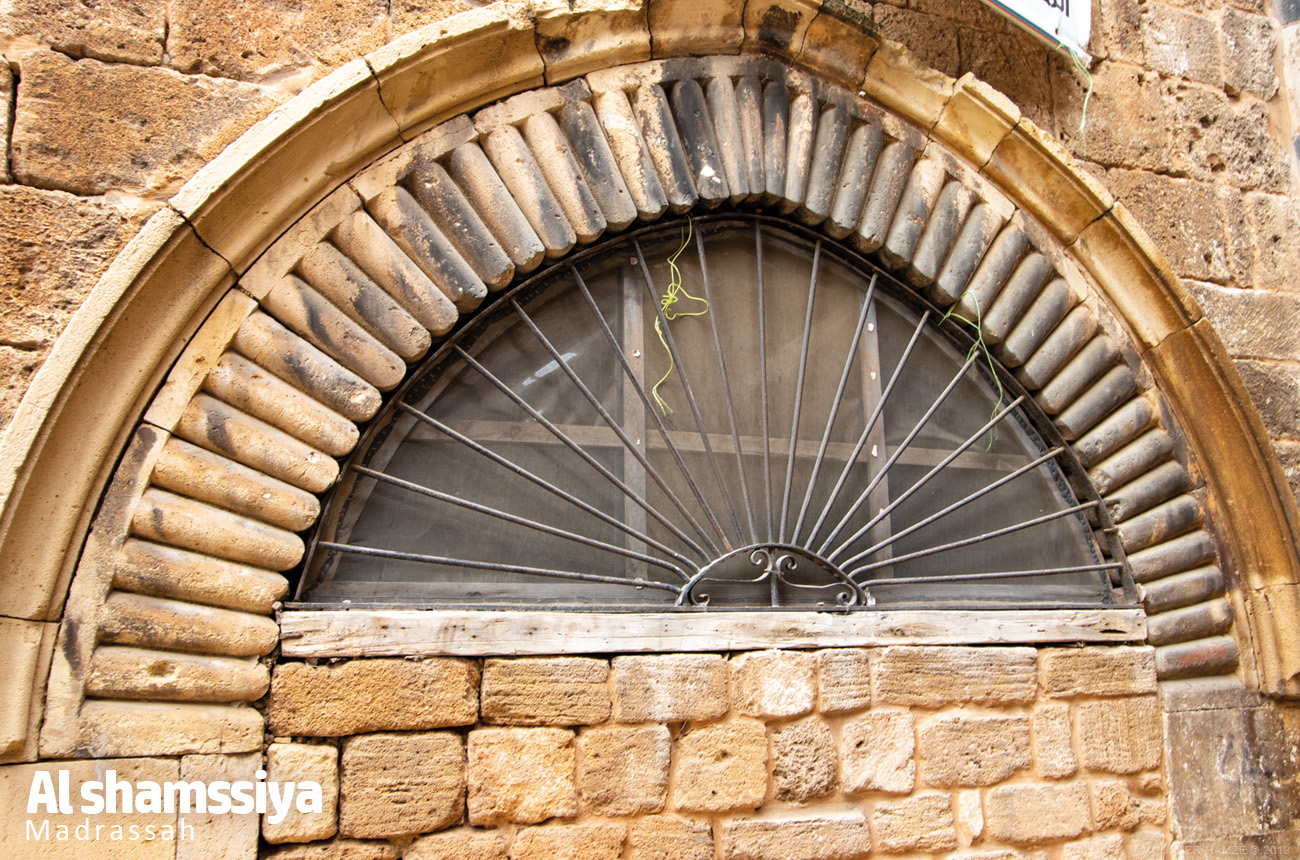Schools spread in Tripoli in Mamluks time for various Islamic Religion tutoring. Thirty-five schools still exist after the city lost six of them in the last flood in mid-20th century.
Al Qartawiya
Tripoli’s largest and most important historical madrassa. It was built by the Mamluk Prince Saif al-Din Qurtay at the beginning of the 14th century AD. The school is characterized by its huge gate with symmetrical textured decor and Muqarnasats, a back wall with geometric patterns, Quranic verses and royal decrees. The school also features a marble ablution basin in front of the entrance, which is surrounded by school corridors at a slightly higher level. The Mihrab wall is made of crafted colored marble in geometric forms and shapes.
Al Tawashiya
It was built by Prince Saif al-Din Muhammad al-Tawashi in the fifteenth century AD. It is characterized by its ornate gate and a small Andalusia style window and was turned later into a mosque.
Al Ajamiyah
It was built by Mohammed Alsukkar in the 14th century.
Al shamssiya
It was built in the early 14th century and features a unique arc of stone pillows.
Al Qadi Omar
It was built by Judge Omar El Droubi in the Ottoman period before the middle of the 19th Century almost completely destroyed, but recently rebuilt.
Al Sanjaqiyah
Ottoman, built by Mahmoud Bey Sandjak at the beginning of the 17th Century.
Al Saqraqiyah
It was built in the Mamluk era in the first half of the 14th century AD. Its main façade is decorated with inscriptions and texts showing the history of construction and estates.
Al Mardania
It an important Islamic building and was built by Prince Alladdin Edgamesh al-Mardani Al- Ashrafi in 1307 AD (707 Hijri) as it is inscribed on the white marble tablet mounted above the school’s entrance threshold.
Al Rajabiyah
It dates back to the year 1682 AD in the Ottoman era, including the tomb of Sheikh Rajab Raqi Bakhur. Now turned into a mosque for the neighborhood persons.
Al Nouriya
A Mamluk school that dates back to the 14th century AD, does not carry any historical writings and builders not known, but some historians believe it was one of the city’s wealthy “Prince Nur Eddine”, the builder of Nuri Hammam, which is directly across. The school is distinguished by its magnificent marble mihrab.
Al Qaderiyah
Built in the Mamluk era in the 14th century, it is the largest school in Tripoli after the Qaratawi School and has recently become a mosque. Its gate bears no decorations and inside to the left there is a mausoleum without writing, owner unknown.
Al Khatouniya
A Mamluk school built by Prince Ezzeddine Edmar Ashrafi with bis wife Argun Khatoun hence the name “Khatouniya. Construction date is 1374 AD with the school Waqf estate and conditions engraved on the entrance wall.
Al Mash’had
An old Mamluk building, builder unknown. It was called Al-Mashhad because it enclosed a mausoleum, located in Al-Nouri district to the right of the Great Al-Mansouri Mosque’s main entrance. The school is characterized by an impressive gate, filled with geometric motifs, mosaics and white and green marble, with Mamluk muqarnas that marked the gates of most of Tripoli’s schools and mosques.
